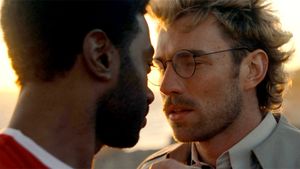With global temperatures rising, melting glaciers pose a greater risk to the communities below them.
When glaciers melt, large amounts of water pour into lakes and surrounding areas, which can quickly lead to a type of flash floods known as glacial lake outburst floods.
A study published in Nature Communications found that over 15 million people live in areas at risk of glacial flooding, with more than half in just four countries: China, India, Pakistan, and Peru.
The report looked at the condition of lakes, as well as the number of residents within 30 miles downstream. They also considered where flood prevention and response resources could be influenced by corruption, based on an index from nonprofit Transparency International.
Tom Robinson, co-author of the study and risk researcher at the University of Canterbury in New Zealand, told The Washington Postthat glacial floods “pose a globally significant hazard, and that hazard appears to be getting significantly worse with climate change."
Previous research found that glacial lakes have increased by about 50 percent globally since 1990. Robinson said the most surprising increase was seen in the Andes of Peru, with glacial lakes rising by 93 percent in the last twenty years.
In comparison, high-mountain Asia increased by 37 percent, yet the Himalayas account for nearly double the amount of glacial lake research — in almost half the years.
“The focus over the last few years on high-mountain Asia is good,” Robinson said. “But that shouldn’t come at the expense of other places with really high danger as well, such as the Andes.”
Disasters can still be averted if local governments create resources for proper preparations and response. For example, Nepal has an early warning system that guides residents to a safer area, though Robinson notes this strategy isn't as beneficial to communities further upstream to lakes. Other researchers have proposed lake draining, though it would be costly for temporary results.
The only solution that could protect all communities would be combatting climate change, and keeping global temperatures below the 1.5C limit set by the United Nations during the Paris Climate Agreement. As the world is not on track to meet that goal, Robinson said communities must take proper precautions.
“It sounds quite dire, but it doesn’t need to be,” he said. “With thoughtful investment and careful planning, we can avoid these.”
- Seattle Glacier Has 'Completely Disappeared,' Researchers Say ›
- Half of Earth's Glaciers Will Melt By End of Century, Study Finds ›



















































